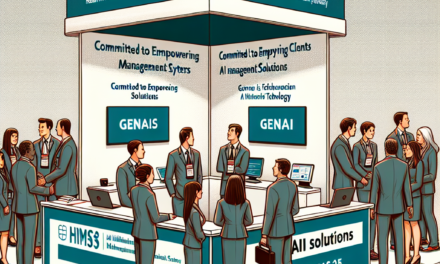Optimizing Patient Flow | Nextech

In the ever-evolving landscape of healthcare, optimizing patient flow is a critical component for enhancing the efficiency and effectiveness of medical services. Nextech, a leader in healthcare technology solutions, offers innovative tools and strategies to streamline patient flow, reduce wait times, and improve patient satisfaction. This article delves into the intricacies of optimizing patient flow, exploring various subtopics that highlight the importance and impact of efficient patient management.
Understanding Patient Flow
Patient flow refers to the movement of patients through a healthcare facility, encompassing every step from admission to discharge. Efficient patient flow is essential for minimizing bottlenecks, reducing wait times, and ensuring that patients receive timely care. Understanding the dynamics of patient flow is the first step towards optimization.
The Importance of Patient Flow
Efficient patient flow is crucial for several reasons. Firstly, it directly impacts patient satisfaction. Long wait times and delays can lead to frustration and dissatisfaction, which can negatively affect a healthcare facility’s reputation. Secondly, efficient patient flow is essential for maximizing resource utilization. By optimizing the movement of patients, healthcare facilities can ensure that resources such as staff, equipment, and rooms are used effectively.
Moreover, efficient patient flow can lead to improved clinical outcomes. Timely care is often critical for patient recovery, and delays can result in complications or prolonged hospital stays. By optimizing patient flow, healthcare facilities can enhance the quality of care provided to patients.
Factors Affecting Patient Flow
Several factors can impact patient flow within a healthcare facility. These include:
- Staffing levels: Adequate staffing is essential for managing patient flow effectively. Insufficient staff can lead to delays and bottlenecks.
- Facility layout: The physical layout of a healthcare facility can influence patient movement. Poorly designed layouts can result in inefficiencies and increased wait times.
- Technology: The use of technology, such as electronic health records (EHRs) and patient management systems, can streamline processes and improve patient flow.
- Communication: Effective communication between staff members is crucial for coordinating patient care and ensuring smooth transitions between different stages of treatment.
- Patient volume: High patient volumes can strain resources and lead to congestion, affecting patient flow.
Challenges in Optimizing Patient Flow
Optimizing patient flow is not without its challenges. One of the primary challenges is balancing patient demand with available resources. Healthcare facilities must ensure that they have sufficient staff and resources to meet patient needs without overburdening their systems.
Another challenge is managing variability in patient flow. Patient volumes can fluctuate due to factors such as seasonal illnesses or unexpected emergencies. Healthcare facilities must be able to adapt to these changes to maintain efficient patient flow.
Additionally, resistance to change can be a significant barrier to optimizing patient flow. Implementing new processes or technologies may require staff training and adjustments to existing workflows, which can be met with resistance from staff members.
Strategies for Optimizing Patient Flow
Several strategies can be employed to optimize patient flow within a healthcare facility. These include:
- Implementing technology solutions: The use of EHRs, patient management systems, and other technology solutions can streamline processes and improve patient flow.
- Redesigning facility layouts: Optimizing the physical layout of a healthcare facility can enhance patient movement and reduce bottlenecks.
- Enhancing communication: Improving communication between staff members can facilitate coordination and ensure smooth transitions between different stages of treatment.
- Adjusting staffing levels: Ensuring that staffing levels are adequate to meet patient demand can help prevent delays and bottlenecks.
- Implementing process improvements: Identifying and addressing inefficiencies in existing processes can enhance patient flow.
Case Study: Successful Patient Flow Optimization
A case study of a hospital that successfully optimized its patient flow can provide valuable insights into the process. For example, a hospital in the United States implemented a patient management system that streamlined the admission and discharge processes. By automating these processes, the hospital was able to reduce wait times and improve patient satisfaction.
The hospital also redesigned its facility layout to enhance patient movement. By creating dedicated pathways for different types of patients, such as those requiring emergency care or outpatient services, the hospital was able to reduce congestion and improve patient flow.
Additionally, the hospital enhanced communication between staff members by implementing a centralized communication system. This system allowed staff members to coordinate patient care more effectively, resulting in smoother transitions between different stages of treatment.
The Role of Technology in Optimizing Patient Flow
Technology plays a pivotal role in optimizing patient flow within healthcare facilities. By leveraging advanced technology solutions, healthcare providers can streamline processes, enhance communication, and improve overall efficiency. Nextech offers a range of technology solutions designed to optimize patient flow and improve patient outcomes.
Electronic Health Records (EHRs)
Electronic Health Records (EHRs) are a fundamental component of modern healthcare technology. EHRs provide a digital version of a patient’s medical history, making it easily accessible to healthcare providers. By using EHRs, healthcare facilities can streamline patient information management, reduce paperwork, and improve communication between staff members.
EHRs also enable healthcare providers to access real-time patient data, allowing for more informed decision-making. This can lead to improved patient outcomes and more efficient patient flow. For example, EHRs can help healthcare providers identify patients who are ready for discharge, reducing unnecessary delays and freeing up resources for other patients.
Patient Management Systems
Patient management systems are another essential technology solution for optimizing patient flow. These systems provide a centralized platform for managing patient information, appointments, and billing. By automating these processes, healthcare facilities can reduce administrative burdens and improve patient flow.
Patient management systems also enable healthcare providers to track patient progress and identify potential bottlenecks in the patient flow process. This allows for more proactive management of patient flow and can lead to improved patient satisfaction and outcomes.
Telemedicine
Telemedicine is an emerging technology that has the potential to revolutionize patient flow within healthcare facilities. By providing remote consultations and monitoring, telemedicine can reduce the need for in-person visits, freeing up resources for other patients.
Telemedicine also enables healthcare providers to reach patients in remote or underserved areas, improving access to care and reducing wait times. By integrating telemedicine into their patient flow processes, healthcare facilities can enhance efficiency and improve patient outcomes.
Data Analytics
Data analytics is a powerful tool for optimizing patient flow. By analyzing patient data, healthcare facilities can identify trends and patterns that may impact patient flow. This information can be used to make informed decisions about resource allocation, staffing levels, and process improvements.
Data analytics can also help healthcare providers identify potential bottlenecks in the patient flow process and develop strategies to address them. By leveraging data analytics, healthcare facilities can enhance efficiency and improve patient outcomes.
Case Study: Technology-Driven Patient Flow Optimization
A case study of a healthcare facility that successfully optimized its patient flow using technology can provide valuable insights into the process. For example, a hospital in Canada implemented a patient management system that streamlined the admission and discharge processes. By automating these processes, the hospital was able to reduce wait times and improve patient satisfaction.
The hospital also integrated telemedicine into its patient flow processes, allowing for remote consultations and monitoring. This reduced the need for in-person visits and freed up resources for other patients. Additionally, the hospital used data analytics to identify trends and patterns in patient flow, allowing for more informed decision-making and improved efficiency.
Enhancing Communication for Improved Patient Flow
Effective communication is a cornerstone of optimizing patient flow within healthcare facilities. By enhancing communication between staff members, healthcare providers can ensure smooth transitions between different stages of treatment and improve overall efficiency. Nextech offers a range of communication solutions designed to enhance patient flow and improve patient outcomes.
The Importance of Communication in Patient Flow
Communication is essential for coordinating patient care and ensuring that patients receive timely treatment. Poor communication can lead to delays, bottlenecks, and errors, negatively impacting patient flow and outcomes.
Effective communication is also crucial for managing patient expectations. By keeping patients informed about their treatment plans and wait times, healthcare providers can enhance patient satisfaction and reduce frustration.
Strategies for Enhancing Communication
Several strategies can be employed to enhance communication within healthcare facilities. These include:
- Implementing centralized communication systems: Centralized communication systems provide a platform for staff members to coordinate patient care and share information in real-time.
- Enhancing staff training: Providing staff members with training on effective communication techniques can improve coordination and reduce errors.
- Utilizing technology solutions: Technology solutions such as EHRs and patient management systems can streamline communication and improve information sharing.
- Encouraging open communication: Creating a culture of open communication within healthcare facilities can enhance collaboration and improve patient flow.
- Implementing standardized communication protocols: Standardized communication protocols can ensure consistency and reduce errors in patient care.
Case Study: Communication-Driven Patient Flow Optimization
A case study of a healthcare facility that successfully optimized its patient flow through enhanced communication can provide valuable insights into the process. For example, a hospital in the United Kingdom implemented a centralized communication system that allowed staff members to coordinate patient care more effectively. This system enabled real-time information sharing and reduced delays in patient treatment.
The hospital also provided staff members with training on effective communication techniques, enhancing coordination and reducing errors. Additionally, the hospital implemented standardized communication protocols, ensuring consistency in patient care and improving overall efficiency.
Redesigning Facility Layouts for Optimal Patient Flow
The physical layout of a healthcare facility plays a significant role in determining the efficiency of patient flow. A well-designed layout can enhance patient movement, reduce bottlenecks, and improve overall efficiency. Nextech offers a range of solutions for redesigning facility layouts to optimize patient flow and improve patient outcomes.
The Impact of Facility Layout on Patient Flow
The layout of a healthcare facility can significantly impact patient flow. Poorly designed layouts can result in congestion, delays, and inefficiencies, negatively affecting patient satisfaction and outcomes.
A well-designed layout, on the other hand, can enhance patient movement and reduce bottlenecks. By creating dedicated pathways for different types of patients, such as those requiring emergency care or outpatient services, healthcare facilities can improve efficiency and reduce wait times.
Strategies for Redesigning Facility Layouts
Several strategies can be employed to redesign facility layouts for optimal patient flow. These include:
- Creating dedicated pathways: Designing dedicated pathways for different types of patients can reduce congestion and improve efficiency.
- Optimizing room placement: Placing rooms strategically can enhance patient movement and reduce delays.
- Enhancing signage: Clear signage can guide patients through the facility and reduce confusion.
- Utilizing technology solutions: Technology solutions such as EHRs and patient management systems can streamline processes and improve patient flow.
- Incorporating flexible spaces: Flexible spaces can be adapted to meet changing patient needs and improve efficiency.
Case Study: Facility Layout-Driven Patient Flow Optimization
A case study of a healthcare facility that successfully optimized its patient flow through facility layout redesign can provide valuable insights into the process. For example, a hospital in Australia redesigned its facility layout to create dedicated pathways for different types of patients. This reduced congestion and improved efficiency, leading to shorter wait times and enhanced patient satisfaction.
The hospital also optimized room placement to enhance patient movement and reduce delays. Additionally, the hospital implemented clear signage to guide patients through the facility, reducing confusion and improving overall efficiency.
Implementing Process Improvements for Enhanced Patient Flow
Process improvements are a critical component of optimizing patient flow within healthcare facilities. By identifying and addressing inefficiencies in existing processes, healthcare providers can enhance efficiency, reduce wait times, and improve patient outcomes. Nextech offers a range of solutions for implementing process improvements to optimize patient flow.
The Importance of Process Improvements in Patient Flow
Process improvements are essential for enhancing efficiency and reducing wait times within healthcare facilities. Inefficient processes can lead to delays, bottlenecks, and errors, negatively impacting patient satisfaction and outcomes.
By implementing process improvements, healthcare providers can streamline workflows, enhance coordination, and improve overall efficiency. This can lead to improved patient satisfaction and outcomes, as well as more effective resource utilization.
Strategies for Implementing Process Improvements
Several strategies can be employed to implement process improvements within healthcare facilities. These include:
- Conducting process audits: Conducting audits of existing processes can help identify inefficiencies and areas for improvement.
- Implementing technology solutions: Technology solutions such as EHRs and patient management systems can streamline processes and improve efficiency.
- Enhancing staff training: Providing staff members with training on new processes can improve coordination and reduce errors.
- Encouraging continuous improvement: Creating a culture of continuous improvement within healthcare facilities can enhance efficiency and improve patient outcomes.
- Utilizing data analytics: Data analytics can help identify trends and patterns in patient flow, allowing for more informed decision-making and process improvements.
Case Study: Process Improvement-Driven Patient Flow Optimization
A case study of a healthcare facility that successfully optimized its patient flow through process improvements can provide valuable insights into the process. For example, a hospital in Germany conducted a process audit to identify inefficiencies in its admission and discharge processes. By addressing these inefficiencies, the hospital was able to reduce wait times and improve patient satisfaction.
The hospital also implemented a patient management system to streamline processes and enhance coordination. Additionally, the hospital provided staff members with training on new processes, improving coordination and reducing errors.
Conclusion
Optimizing patient flow is a critical component of enhancing the efficiency and effectiveness of healthcare services. By understanding the dynamics of patient flow and implementing strategies such as technology solutions, enhanced communication, facility layout redesign, and process improvements, healthcare providers can improve patient satisfaction and outcomes.
Nextech offers a range of innovative solutions designed to optimize patient flow and improve overall efficiency. By leveraging these solutions, healthcare facilities can enhance resource utilization, reduce wait times, and provide high-quality care to patients.
In conclusion, optimizing patient flow is essential for improving the quality of care provided to patients and ensuring the sustainability of healthcare facilities. By implementing the strategies outlined in this article, healthcare providers can enhance efficiency, improve patient satisfaction, and achieve better clinical outcomes.




